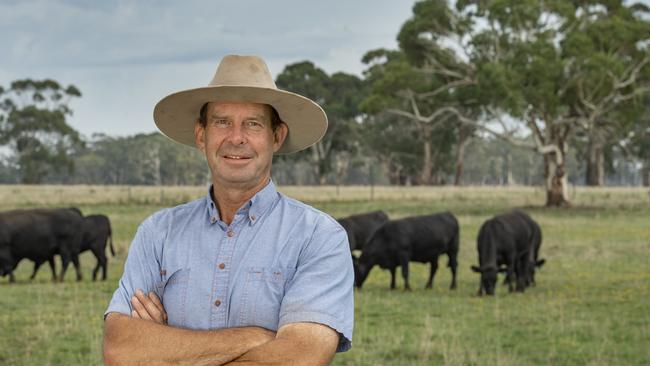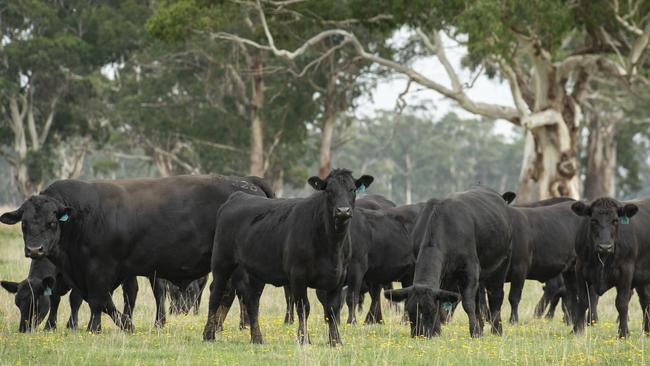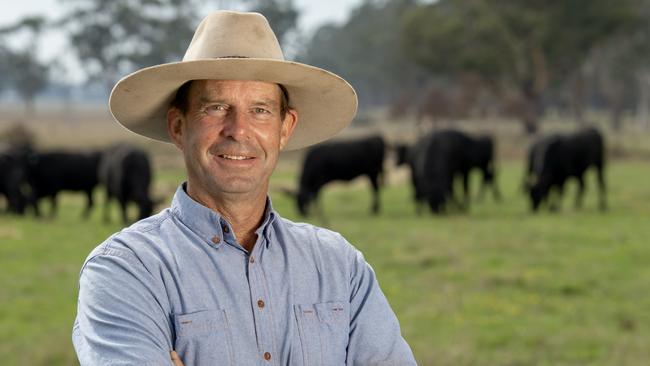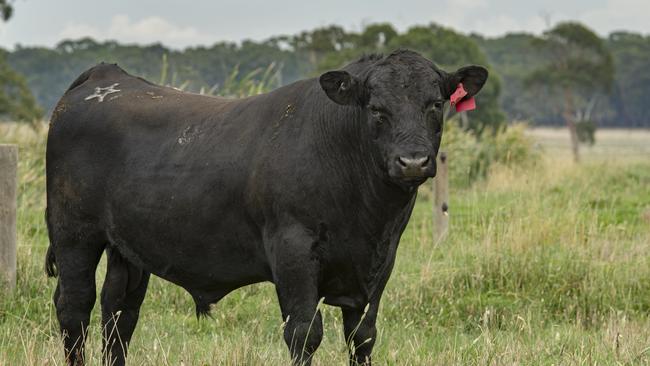Mark Johns of Cobden on his Angus beef operation and lateral thinking
Mark Johns has used a rare combination of owned and leased property to grow his beef business. It’s worked stunningly.
A laser focus on quality and lateral thinking have been the hallmarks of a rapid beef business expansion for Mark Johns.
With a small farm base and a number of leased properties, Mark has turned his herd of just 30 cattle nine years ago to a throughput of up to 1800 Angus heifers annually.
A quiet achiever who prefers to fly under the radar, Mark hopes others might see the possibilities of running a successful beef operation even if they can’t afford to buy land.
“I was able to buy a small (220 hectare) property at Cobden nine years ago and someone said to me that I wasn’t going to go anywhere if I kept thinking of limiting myself to that land area,” Mark said.

“I’ve been able to get good people around me to help me set up the program where we buy in Angus heifers, join them and sell them pregnancy tested in calf.”
Mark chose not to go down the path of finishing steers, preferring the greater range of options with buying heifers.
“When you buy a steer, you can fatten and sell it, but with a heifer, you can sell it joined, or with a calf at foot or even empty to a processor,” he said.
To minimise the risk in such a program, Mark has targeted the top end of genetics when it comes to buying in the Angus heifers, as well as the bulls they are joined to.
The heifers are sourced through Elders Korumburra agent Don Bowman, who has secured numbers from a large spread from northern NSW to King Island and almost everywhere in between.
Don also has a hand in marketing all females that come off the property.
“We like to buy heifers which have top breeding and recognisable bloodlines,” Mark said.
FAST TURNAROUND
Initially the heifer buy-in weight was about 300kg, but this weight range has been moved up to 400-450kg at 16-18 months, with the goal of joining them as quickly as possible once they arrive on one of the properties.
The heifers are joined to TeMania Angus bulls, with Mark running his 39 bulls in teams of three.

“We just spent an average of $17,000 on 13 bulls to add to the sire group, and so we manage these bulls to not only get the heifers in calf but to protect their longevity,” Mark said.
“We run three bulls together in a team so that helps to reduce the chances of injury and each group of three bulls is run with about 100 heifers for eight weeks.”
A second team of three fresh bulls is swapped with the original team to compete the eight-week joining. Then the mob is pregnancy tested a month after the bulls are taken out, and any empties given a second opportunity to become pregnant.
Mark budgets on keeping the bulls for three years, with the bulls put with heifers up to three times a year.
“I would love a cartoonist to come up with a drawing of a bull being carried out on a stretcher saying to other young bulls not to go onto our place because they get worked so much,” he said.
By the end of those three years, the bulls are sold as they are generally physically too big to be put over a heifer and are sometimes sold to a fellow cattle producer to use over cows.
GENE GENIUS
The flip side of using bulls more than once a year is that it brings down the sire cost of a live calf on the ground, as each bull is producing up to 100 progeny each year through several joinings, rather than the 40 or so for a once-a-year traditional mating.

Mark is pedantic when it comes to bull selection, focusing on low birthweight, short gestation, calving ease and high growth in his choices.
“When we sell our PTIC heifers, we want the buyers to be reassured that they will have no problems about calving them down,” he said.
“We have sold several thousand PTIC Angus heifers and have never had negative feedback about calving problems.
“That comes down to the reliable genetics from TeMania, with years of performance recording and accuracy behind their data.
“And using bulls from TeMania also gives us a marketing advantage so we can piggyback off their reputation when selling our heifers.”
Cattle are managed in such a way that nothing is left to chance. All heifers that arrive on the property are vet checked, pregnancy tested twice, receive all vaccinations and drenched prior to delivery so that all the buyers need to do is unload the truck and wait for them to calve.
COST FACTOR
One of the key factors of which Mark has no control though is the buy in prices for heifers for his operation.
In drier years, that buy in price was about a third less than it is now, and while this has increased, so has the sale price at the other end.
Bull prices have also lifted, making his strategy of using the sires more each year even more valid.

He estimates the costs of turning an unjoined young Angus female to a PTIC heifer on the point of calving to now be between $500-$600 given the costs of bulls, the cost to gain weight, the animal health treatments and the pregnancy testing.
The margins may be slightly less now given higher buy in rates but keeping the focus on quality heifers and joining them to top sires means he has the greatest chance to the best returns possible.
And an increasing throughput, with the business still in its growth phase, means the profit from the enterprise remains consistent despite the smaller margin between buy in and sell prices.
While the market for PTIC Angus heifers is insatiable at the moment, Mark has a back up plan that he has called on in years past and has in his back pocket just in case.
All PTIC heifers are offered for sale on Auctionsplus at anywhere from four to 12 weeks from calving, giving access to buyers across eastern Australia which have different restocking windows.
Auctionsplus is the preferred selling method as it allows Mark to tell the full story of every treatment, each line of genetics, the weight and temperament of the cattle and the sires they were joined to so potential buyers can study this information before purchase.
But if demand dims for pregnant females or the prices are not high enough, Mark is happy to calve the heifers down and sell them as a cow and calf unit, targeting yet another potential market.
HEIFER PRESSURE
All heifers are given two opportunities to get in calf, and if they are still empty by the end of the second joining, they are sold to a processor.
There are few that head that way, though, with calving percentages above 90 per cent which keeps wastage from the operation low.

Mark said the best tips he could give others was to think laterally and not become caught up in having to own land to run a farming enterprise.
And essential to success was having a team of people working on the business who knew exactly what was needed.
“Any success I have is due to key people, like Don Bowman who sources my heifers, and he has been a driving force in my business – scale and quality would not be what it is if not for Don,” he said.
“Rowan McRae from Elders Korumburra has been key in land acquisition for leasing, stock management support and marketing and fellow Elders agent Peter Rollason has assessed all 65 lots of heifers I have sold for Auctionsplus.”
All of those people have been integral in creating lines of Angus heifers which are snapped up as soon as they are offered because of the efforts to produce quality, Mark said.
“You can’t demand a reputation, you have to earn it and that is what we are trying to do,” he said.
“While it would be ideal to have more of our own land, and while there should be some kind of system which supports young people getting into agriculture, it is possible to do something larger scale without owning country.
“You just have to have the ability to think laterally.”




